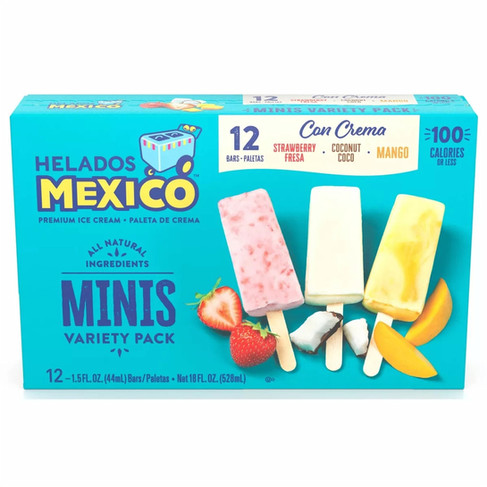Beyond the Scale: Psychological Triggers and Strategies for Lasting Weight Loss
- Yash Kumar

- Feb 4
- 7 min read
Updated: Apr 24
Why Losing Weight Is Harder Than Gaining It (and What to Do About It)
In theory, losing weight seems simple. You need to maintain a consistent calorie deficit—eating less food than your body requires each day. Less food should mean less time cooking, less food preparation, and even less money spent on groceries.
But that's just in theory.
Millions of Americans struggle with weight loss because of powerful psychological and social factors that encourage overeating. These factors are often overlooked or not consciously recognized—but they are constantly at play.
Don't believe me? Ask yourself these questions:
Do you know the logo or slogan of your favorite fast-food company? McDonald's golden arches? Taco Bell's "Live Mas?" You get the point.
Now, do you know the logo of your favorite vegetable brand?
You probably answered "no" to that second question, didn't you?
The point is this: we are psychologically primed to crave and surround ourselves with unhealthy, calorie-dense foods. These stimuli create habits that contribute to overeating and, ultimately, obesity.
While I plan to dive into macro-level societal factors influencing obesity in a future post, today, I'll focus on micro-level psychological triggers. I'll also share four effective strategies to help you avoid overeating, maintain a calorie deficit, and stay on track—strategies that helped me lose 80 pounds.
If you're just starting your weight-loss journey, you might think you don't need these tips right now. You're motivated, your willpower is strong, and you're ready to conquer this challenge. But trust me, willpower is like a dam holding back water. No matter how strong it feels, if you let the pressures of these psychological triggers overwhelm you, the dam will eventually crack.
Here are four actionable strategies to reinforce your "dam" and make weight loss more manageable.
Strategy 1: Out of Sight, Out of Mind
I have touched upon this strategy in an earlier post titled "Craving Smarter, Not Harder: A Balanced Approach to Treating Yourself on a Weight-Loss Journey," but I feel it is important to reiterate, especially for those who haven't seen the post.
Scenario: It's 8 PM, and you've just come home after a long day. You're crushing your diet and calorie goals. But as you pass the kitchen, you spot a box of chocolate chip cookies you bought earlier this week. You remember how good they taste.
For the next three hours, those cookies linger in your mind—until 11 PM rolls around. Despite being full from dinner, you grab a couple of cookies, mindlessly down 500 calories, and blow your calorie deficit for the day.
Sound familiar? This used to happen to me all the time.
The simplest way to avoid this? Don't keep junk food in your house. If it's not in sight, you won't think about it. And if it's not easily accessible, you'll be far less likely to cave in.
Even if you do crave cookies at 11 PM, the thought of driving to the store, buying them, and bringing them home often feels like way too much effort. Most of the time, you'll move on and stay on track.
Key Takeaway: Keeping calorie-dense, unhealthy foods out of sight and out of reach drastically reduces cravings and binge eating. Plus, you'll save money by not buying unnecessary snacks in the first place.

As referenced in my post, "Craving Smarter, Not Harder: A Balanced Approach to Treating Yourself on a Weight-Loss Journey," here’s a photo of me visiting Snowflake Ice Cream Shoppe to satisfy my sweet tooth. Instead of keeping ice cream readily available in my freezer, I turned it into a special occasion by making a fun hour-long trip east to enjoy the best of the best!
Strategy 2: Pre-Packaged Foods Instead of Eyeballing it
So below are two images of one of my favorite sauces, "Buffalo Wild Wings Asian Zing Sauce." On the left is one serving of weight, which is 80 calories (I know, it is barely any sauce). The one on the right is three servings of sauce, which is about 240 calories. You see how similar these portions look, and "eyeballing" the amount of sauce you use can lead to many extra calories you did not even know you were consuming?
Mistakes like this add up quickly during the day and can completely erase your calorie deficit.
Pro-Tip: Weigh your foods—especially calorie-dense items like sauces, oils, and carbs. You don't need to weigh high-volume foods like vegetables, but accurate portions are critical for fats and condiments.
Over time, once you become more familiar with the portion size, you can ease away from weighing. You don't have to weigh high-volume foods like vegetables, but definitely items high in fats, like cooking oils!
To bridge the gap between perceived and actual portions, I often rely on individually packaged foods. This allows me to know the exact number of calories I'm consuming while limiting myself to a single portion or serving. Let's be honest—no one wants to measure out every single food they eat.
For example, when it comes to sauces, I sometimes use Chick-fil-A's pre-packaged options. If I want the Chick-fil-A Sweet & Spicy Sriracha Sauce," I'll stick to just one packet, which I know contains exactly 60 calories.
I apply the same approach to foods that are typically calorically dense. Take ice cream, for instance: I opt for Helados Mexico Frozen Minis Fruit & Cream Variety Bars (12-count). Two bars come out to exactly 150 calories, which makes it easy to fit into my daily macros and stay on track.
From a psychological perspective, this approach also brings a sense of relief. I don't constantly feel like I'm in a lab experiment, weighing out every snack I eat. Instead, I can enjoy my food without the mental burden of micromanaging portions. At the same time, I don't fall into the traps of eyeballing portions that lead to overeating!

When I decide to use sauces that may be higher in calories, I keep a jar of individually packed sauces, like Chic-fil-A sauces.
Strategy 3: Keep it Natural
What I mean by this is limit your ability to consume excessive calories in such a limited amount of time. Don't have a snack that is already calorically dense, so processed and accessible that with one handful, you can eat 600 calories and throw off your diet. If you are having a bad day and want to indulge in a quick pick-me-up treat, that is fine, but don't keep highly accessible foods that require no effort to prepare near you. One minor mental mishap that lasts a few seconds can set you back an entire day or two on your weight-loss journey.
One helpful strategy I have figured out is keeping produce, such as nuts and fruits, in their natural form. For example, let's say I am craving pistachios. I keep them shelled in my house, so when I want a snack, I have to manually crack open each pistachio and then eat one. The work it takes to crack each individual pistachio, along with extended time of consumption, will, in turn, cause me to eat much fewer pistachios and feel more satiated since I am eating slower compared to if I just grab and gobble down a handful of easily accessible unshelled pistachios.
The same goes for fruit—if I'm craving pineapple, I keep a fresh pineapple in my fridge, so I have to take the time to cut my portion instead of having easy access to, let's say, candied pineapple chunks. I am not saying fruits or nuts are bad for you (and you should incorporate them accordingly into a healthy diet), but sometimes they can be very calorie-dense, and mindlessly eating such foods when you make them easily accessible can ruin your calorie deficit without you even knowing!
The image on the left is about half of a serving of candied fruit, about 150 calories. On the right is about 600 grams of fresh watermelon, about 180 calories. It is all about volume eating! It would take about an hour for me to prepare and then eat all of that watermelon, but only 2 minutes to grab a handful and eat those few pieces of candied fruit.
This mindset ties into my post "Craving Smarter, Not Harder: A Balanced Approach to Treating Yourself on a Weight-Loss Journey" and Strategy 1 in this post: make it inconvenient to indulge in diet-breaking foods and plan your "cheat meals/snacks" proactively and intentfully!
Strategy 4: The Chicken Breast Test
In my personal weight-loss journey, I came to realize how many of my old eating habits were rooted in dopamine-driven eating. I often ate simply because I was bored, and boredom pushed me toward foods that offered instant gratification—calorically dense pastries, cookies, and snacks. This mindset, I learned, is quite prevalent in America and contributes heavily to obesity. It starkly contrasts with the approach of healthy-weight individuals, who typically eat only when they are truly hungry.
In other words, I realized that to lead a healthier lifestyle and lose weight, food shouldn't be a primary tool for coping with stress or boredom. It's meant to fuel my body and satisfy actual hunger.
Now, sometimes, when trying to lose weight and maintain a calorie deficit, it's hard to tell if we're actually hungry and need nutrients or if we're just bored. I found that I often "felt hungry" but wasn't actually hungry at all—I was either dehydrated, bored, or resisting cravings for apple pie.
To better gauge whether I'm truly hungry or not, I ask myself:
"Yes or no: Am I hungry enough right now to eat a bland, unseasoned, boiled chicken breast?"

I'm talking like this bland—poached.
If the answer is yes, that means I'm truly hungry, and I allow myself to nourish my body.
If the answer is no, it probably means I don't actually want to eat nutritious foods—I just want to eat garbage.
Now, I want to preface this by saying that in normal circumstances, when I'm not actively trying to lose weight, I don't really use this strategy. I feel I can regulate on my own when I want to eat or not.
However, when trying to maintain a calorie deficit, I've found that using this rule of thumb really allows me to only eat when I truly need it. In turn, it helps me cut back on calories and ensures that I hit my caloric goals for the day.
What Are Your Go-To Strategies?
These are the psychological tricks I’ve used to stay in a calorie deficit, avoid overeating, and ultimately lose 80 pounds. They’re simple, effective, and surprisingly easy to implement once you try them. What about you? Do you have any weight-loss tips or strategies that work for you? Feel free to message me at yash.kumar.wix@gmail.com. As always, thanks for reading!



















